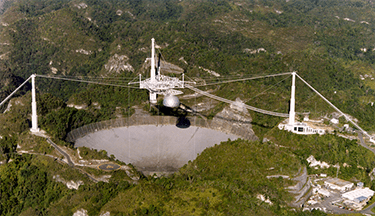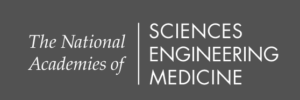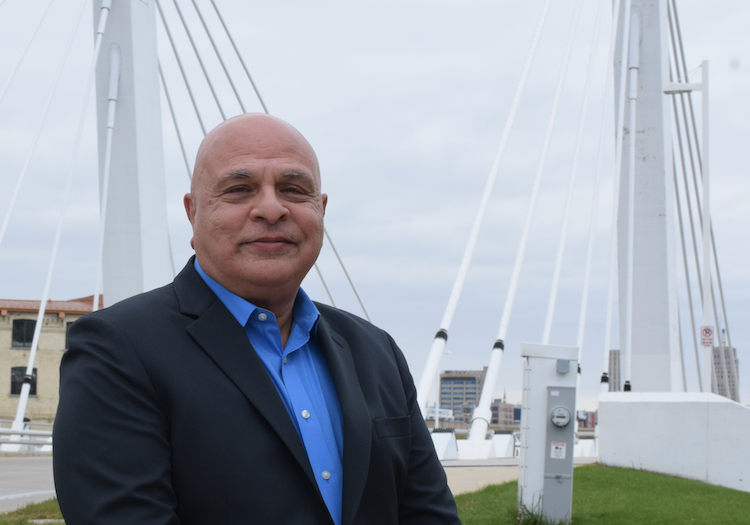At the invitation of the National Academies of Sciences, Engineering and Medicine, Habib Tabatabai, professor, civil & environmental engineering and director of the UWM’s Structural Engineering Lab, will serve on an ad-hoc committee that will review the failure and collapse of the mammoth radio telescope at the Arecibo Observatory in Puerto Rico.
Tabatabai is an expert in bridge engineering and assessment issues, most notably the long-term durability and reliability of cable-stayed bridge structures.
Once the world’s largest single-dish radio telescope, Arecibo’s 900-ton equipment platform, suspended some 500 feet above the dish, collapsed in December 2020 after the last of its support cables failed. It had been completed in 1963 and researchers from around the world used the telescope in their studies of radio astronomy, planetary science, atmospheric science, climate science and more.

A nationally-sought out expert, Tabatabai has conducted qualification testing on stay cables on every cable-stayed bridge built during the 1990s in the United States. In Wisconsin, he has worked with the Wisconsin Department of Transportation to develop guidelines for engineers approaching the repair of bridges that suffered corrosion and deterioration as well as those that were accidentally damaged.

On the Arecibo project, Tabatabai will be joined by committee members with expertise in areas including civil and structural engineering, geotechnical engineering, failure investigation, risk assessment, corrosion and corrosion protection, materials science, inspection and maintenance practices.
The committee will evaluate the structural engineering reports that were commissioned by the National Science Foundation pre- and post- failure. They will assess the environmental, physical, and design considerations as well as any administrative or management practices that may have been contributing factors to the failure.
The committee’s report, due in about a year, is expected to explain contributing factors and any probable causes of the failure and recommend measures to prevent similar damage in the future.
The Arecibo Observatory is a National Science Foundation facility; the NSF posted this video of the observatory’s collapse.
